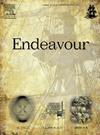那位女士是谁?-在历史背景下应用开源智能。
IF 0.5
4区 哲学
Q3 HISTORY & PHILOSOPHY OF SCIENCE
引用次数: 0
摘要
在对荷兰天文学家和心理学家丽贝卡·阿莱达·比格尔(1886-1943)的网络分析中,我们偶然发现了一张经常被调查的合影,很可能是她的两个亲密朋友和第三个女人在苏黎世的一个化学实验室里与阿尔伯特·爱因斯坦等人一起举行茶会。利用来自暗网、人脸识别、开源智能(OSINT)工具和人工智能(AI)技术的数据,我们发现了这次聚会的四张集体肖像,并能够确定三名女性的真实身份,以及其中一张照片中一名不知名男子的身份,这是非常高的确定性。此外,我们确定了照片拍摄的确切日期和时间:1913年6月30日下午4:30左右。一个多世纪后,围绕着这些集体照片的许多谜团已经解开。在爱因斯坦发表相对论的三年前,通过解决关于爱因斯坦这张标志性照片的(物质)历史背景的许多问题,人们对科学史上最激动人心的时期之一有了新的认识。我们创新的研究方法——包括人工智能、暗网和osint——使我们能够从许多不同的分散和不起眼的来源中重建这些完全被遗忘和严重边缘化的女性的过去元素,并揭示她们在物理学史上的地位甚至比想象的更重要。他们也是爱因斯坦每周学术讨论会中庞大的传声筒的一部分,并且有精确的天体物理学计算需要补充;是证明爱因斯坦相对论不可或缺的因素本文章由计算机程序翻译,如有差异,请以英文原文为准。
Who’s that lady? — Applying open source intelligence in a history context
During a network analysis of the Dutch astronomer and psychologist Rebekka Aleida Biegel (1886–1943), we stumbled upon an often investigated group photo that most likely shows two of her close friends and a third woman posing with Albert Einstein among others in a chemistry laboratory in Zurich while having a tea party. Using data from the Dark Web, face recognition, open source intelligence (OSINT) tools, and artificial intelligence (AI) techniques, we found in total four group portraits of this gathering and were able to determine the true identities of the three women, as well as one of the unknown men in one of the photos, with a very high degree of certainty. Moreover, we determined the exact day and time the photographs were taken: June 30, 1913 around 4:30 PM. After more than a century, the many riddles surrounding these group photos have been solved. By resolving the many questions regarding the (material) historical context of this iconic photograph of Einstein, three years before he published his theory of relativity, new light has been shed on one of the most exciting periods in the history of science. Our innovative research methodology—including AI, Dark Web, and OSINT—enabled us to reconstruct elements of the past of these totally forgotten and heavily marginalized women from many and diverse scattered and unassuming sources and revealed that their place in the history of physics is even more significant than thought. They, too, were part of Einstein’s huge sounding board in the form of his weekly colloquium and had precise astrophysical calculations to add; an indispensible ingredient for proving Einstein’s theory of relativity.
求助全文
通过发布文献求助,成功后即可免费获取论文全文。
去求助
来源期刊

Endeavour
综合性期刊-科学史与科学哲学
CiteScore
1.10
自引率
16.70%
发文量
19
审稿时长
49 days
期刊介绍:
Endeavour, established in 1942, has, over its long and proud history, developed into one of the leading journals in the history and philosophy of science. Endeavour publishes high-quality articles on a wide array of scientific topics from ancient to modern, across all disciplines. It serves as a critical forum for the interdisciplinary exploration and evaluation of natural knowledge and its development throughout history. Each issue contains lavish color and black-and-white illustrations. This makes Endeavour an ideal destination for history and philosophy of science articles with a strong visual component.
Endeavour presents the history and philosophy of science in a clear and accessible manner, ensuring the journal is a valuable tool for historians, philosophers, practicing scientists, and general readers. To enable it to have the broadest coverage possible, Endeavour features four types of articles:
-Research articles are concise, fully referenced, and beautifully illustrated with high quality reproductions of the most important source material.
-In Vivo articles will illustrate the rich and numerous connections between historical and philosophical scholarship and matters of current public interest, and provide rich, readable explanations of important current events from historical and philosophical perspectives.
-Book Reviews and Commentaries provide a picture of the rapidly growing history of science discipline. Written by both established and emerging scholars, our reviews provide a vibrant overview of the latest publications and media in the history and philosophy of science.
-Lost and Found Pieces are playful and creative short essays which focus on objects, theories, tools, and methods that have been significant to science but underappreciated by collective memory.
 求助内容:
求助内容: 应助结果提醒方式:
应助结果提醒方式:


